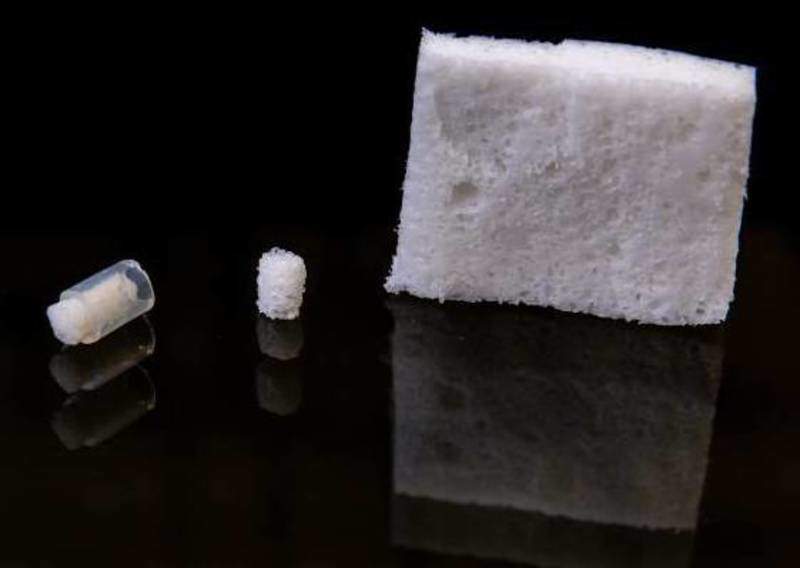
Researchers from the Hong Kong Polytechnic University (PolyU) have created a self-fitting scaffold that can be implanted into bone defects to stimulate bone regeneration.
The new scaffold comprises shape memory polyurethane foam along with the bone tissue component hydroxyapatite. It is intended to improve the recovery of bone injuries and fractures.

Discover B2B Marketing That Performs
Combine business intelligence and editorial excellence to reach engaged professionals across 36 leading media platforms.
Due to the use of shape memory material, the scaffold can be compacted at 0°C and implanted with this shape at room temperature. It can also recover to its original shape at 40°C.
This capability enables scaffold to fill up the irregular bone defects, while the transitional temperatures increase its feasibility in minimally invasive surgical procedures.
The bone scaffold has a highly porous, interconnected structure that enables cells to migrate and form new tissues.
The average pore size of the scaffold is 670μm, which is said to be mostly similar to that of the inner layer of bone, allowing duplication of the original in-vivo microenvironment. Its optimal structure is nearly 60% of space voids.

US Tariffs are shifting - will you react or anticipate?
Don’t let policy changes catch you off guard. Stay proactive with real-time data and expert analysis.
By GlobalDataWhen tested in the laboratory, the self-fitting scaffold was found to be biocompatible without any cytotoxicity.
In an animal study, a total of 18 rabbits having femoral bone defects were implanted with the new scaffolds compacted to about 50% of their actual size.
Upon triggering with 40°C saline, the scaffolds were observed to have expanded from their compacted shape to fill the defect in 60 seconds.
A faster bone tissue ingrowth in volume was found after 12 weeks from the surgery. The implanted rabbits showed 46% of bone ingrowth when compared to 24% in the control group.
The self-fitting scaffold also demonstrated the capability to induce the formation of the osteoblasts and blood vessels.
PolyU researcher Hu Jinlian said: “The results show that our scaffold has overcome the disadvantages of traditional polymer scaffolds, and has great potential for bone regeneration.”





